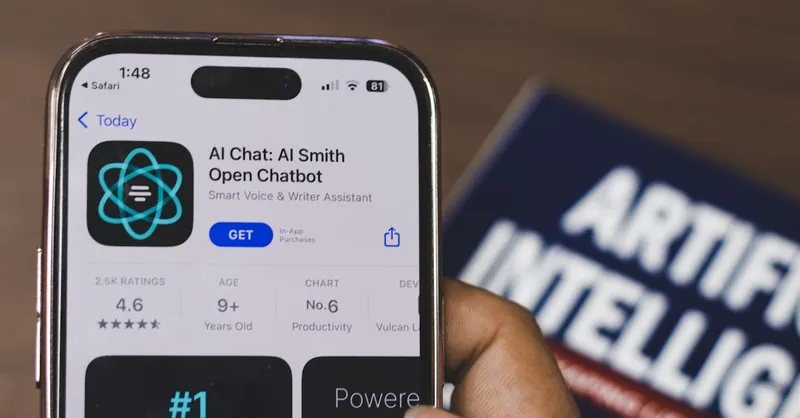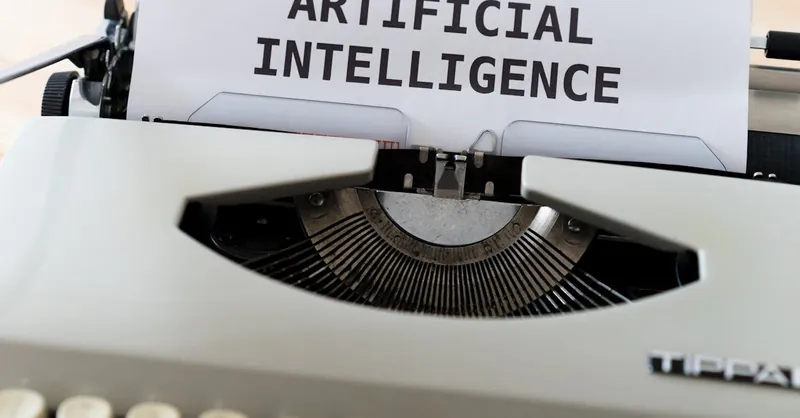Top AI-Integrated Productivity Software for Professionals
Category: Productivity & Automation
Unlock Peak Productivity with AI-Driven Software
Whether you're an entrepreneur juggling multiple projects, a professional seeking to optimize your workflow, or a tech enthusiast eager to harness the latest automation trends, finding the best productivity software with AI integration can transform how you work. You’ve likely explored countless tools promising increased efficiency but struggle to identify which ones truly leverage AI to automate mundane tasks, enhance decision-making, or streamline collaboration without steep learning curves. This post dives deep into the leading AI-powered productivity platforms that match your advanced needs, cutting through generic recommendations to focus on solutions that integrate smart automation, analytics, and intuitive user experiences. We’ll cover software options tailored for various professional demands—from task management and communication to document automation and data analysis—helping you choose tools that fit your workflow seamlessly. Unlike other guides, we focus on practical insights that blend AI capabilities with real-world productivity challenges professionals face daily. Stick around to discover how these innovations can elevate your efficiency and what to consider when integrating AI tools into your business or personal productivity arsenal.
- Unlock Peak Productivity with AI-Driven Software
- Overview of AI Integration in Productivity Software
- Criteria for Choosing the Best AI-Integrated Productivity Software
- Task and Project Management Tools with AI Features
- AI-Powered Communication and Collaboration Software
- Document Automation and Intelligent Writing Assistants
- AI in Time Management and Scheduling
- Data Analytics and Workflow Optimization Tools with AI Integration
- Future Trends in AI-Driven Productivity Tools
- How to Integrate Multiple AI Productivity Tools Seamlessly
- Cost-Benefit Analysis and ROI of Adopting AI Productivity Software
Overview of AI Integration in Productivity Software
Artificial intelligence technologies such as machine learning (ML), natural language processing (NLP), and automation are fundamentally reshaping productivity software, making digital tools smarter, faster, and more intuitive. These AI capabilities enable productivity applications to not only perform routine tasks autonomously but also provide intelligent insights and personalized assistance that adapt to individual workflows. For example, machine learning algorithms analyze your work patterns to prioritize tasks, optimize schedules, and suggest improvements automatically, while NLP powers advanced features like voice commands, sentiment analysis, and real-time language translation within communication and documentation tools.
Moreover, AI-driven automation reduces manual workload by streamlining repetitive processes—from email filtering and calendar management to document generation and data entry—allowing users to focus on higher-value activities. The integration of these AI technologies into productivity software translates into enhanced decision-making, improved collaboration, and significant time savings. As a result, professionals across industries experience smoother workflows, reduced cognitive load, and greater output quality. Understanding these AI components is essential when evaluating the latest productivity tools, as the depth of AI integration directly impacts how effectively software can elevate your productivity and drive smarter work habits.

Image courtesy of Sanket Mishra
Criteria for Choosing the Best AI-Integrated Productivity Software
Selecting the right AI-powered productivity software requires a careful evaluation of several key factors to ensure it aligns perfectly with your unique workflow needs and long-term goals. First and foremost, ease of use is critical—software should offer an intuitive interface and smooth onboarding process, allowing users to quickly harness AI features without a steep learning curve or extensive technical know-how. This maximizes adoption rates and minimizes productivity disruptions.
Equally important are the AI capabilities themselves. The best tools leverage advanced machine learning, natural language processing, and intelligent automation to go beyond basic task management, delivering proactive insights, personalized recommendations, and context-aware assistance tailored to your work patterns. Additionally, comprehensive integration options with other frequently used tools (like email platforms, calendars, CRM systems, and cloud storage) ensure seamless data flow and unified workflow management, eliminating manual data transfers and duplicated effort.
Scalability is another vital consideration—whether you’re an individual professional or a growing team, the software should adapt to increased demands, supporting additional users, projects, or data volume without compromising performance. Finally, security cannot be overstated; robust encryption, compliance with data protection regulations (such as GDPR), and transparent privacy policies are essential to safeguard sensitive information and maintain trust. By focusing on these criteria—ease of use, powerful AI integration, seamless connectivity, scalability, and enterprise-grade security—you’ll be well-positioned to choose productivity software that truly amplifies your efficiency and empowers smarter work.

Image courtesy of Matheus Bertelli
Task and Project Management Tools with AI Features
In today’s fast-paced work environments, task and project management software equipped with AI capabilities is becoming indispensable for professionals and teams striving to boost efficiency and maintain clear priorities. Leading platforms such as ClickUp, Asana, and Monday.com have integrated advanced AI-driven features designed to automate routine project workflows, enhance task prioritization, and provide smart scheduling assistance that adapts dynamically to shifting deadlines and workloads.
These tools leverage machine learning algorithms to analyze past project data and individual work habits for intelligent task prioritization, ensuring users focus on high-impact activities first. For example, AI can automatically suggest which tasks to tackle based on urgency, dependencies, and estimated effort, effectively reducing decision fatigue. Furthermore, powerful automation capabilities allow users to set custom triggers and workflows—such as automatically assigning new tasks when a milestone is completed or sending reminders ahead of due dates—cutting down manual follow-ups and bottlenecks.
Smart scheduling is another hallmark of these AI-powered project platforms. By integrating calendar data and resource availability, the software can recommend optimal meeting times, balance team workloads, and even forecast project timelines using predictive analytics. This not only improves transparency and collaboration but also helps prevent project overruns and missed deadlines. Ultimately, choosing a task management tool with robust AI features empowers teams to work smarter by minimizing busywork and focusing energy on meaningful progress.
Key AI-Driven Features in Top Project Management Tools
- Automated Task Prioritization: AI ranks tasks automatically based on criteria like deadlines, task complexity, and dependencies to streamline daily focus.
- Intelligent Workflow Automation: Customizable triggers and actions reduce manual task updates, status tracking, and communication overhead.
- Smart Scheduling & Resource Allocation: AI balances workloads, suggests meeting times, and forecasts completion dates by analyzing calendar and project data.
- Predictive Analytics for Project Risks: Early detection of potential delays or bottlenecks enables proactive mitigation to keep projects on track.
- Natural Language Processing (NLP) for Updates: Voice commands and AI-generated summaries simplify task creation, status updates, and collaboration notes.
By harnessing these AI-driven capabilities, ClickUp, Asana, and Monday.com transform traditional task management into an adaptive, intelligent system that elevates productivity across individual users and complex teams alike.

Image courtesy of cottonbro studio
AI-Powered Communication and Collaboration Software
Seamless communication and effective collaboration are crucial elements of productivity, especially in today’s hybrid and remote work environments. AI-powered communication and collaboration software such as Slack with AI bots, Microsoft Teams, and Zoom have revolutionized how teams interact by integrating intelligent automation, real-time insights, and context-aware assistance that cut through the noise and enhance teamwork. These platforms move beyond traditional messaging or video conferencing by embedding AI capabilities designed to streamline conversations, automate repetitive tasks, and ensure important follow-ups never fall through the cracks.
For example, Slack’s AI bots can automatically summarize lengthy chat threads, recommend relevant documents, or even suggest next steps based on ongoing conversations—helping teams stay aligned without wasting time scrolling through messages. Microsoft Teams leverages AI for real-time transcription, translation, and noise suppression during meetings, boosting accessibility and focus across global teams. Zoom incorporates AI-driven features such as automated meeting highlights, speaker tracking, and smart scheduling suggestions that optimize meeting effectiveness while reducing manual coordination. Together, these tools enable:
- Automated Follow-Ups – Intelligent reminders and task generation after meetings and chats to ensure accountability.
- Contextual Message Prioritization – AI-driven filtering surfaces urgent or relevant messages, reducing information overload.
- Real-Time Language Translation – Break communication barriers with AI-powered multilingual support during calls and messaging.
- Enhanced Meeting Experience – Automated transcriptions, sentiment analysis, and background noise suppression enhance clarity and engagement.
- Smart Integration with Workflow Apps – Seamless syncing of messages, files, and action items across calendars, task management tools, and CRMs.
By integrating these AI features, communication and collaboration platforms not only save time but also foster more productive, focused interactions—empowering teams to achieve goals faster and with less friction. When choosing communication software, prioritize AI functionality that complements your team’s communication style and workflow, ensuring the tool acts as a proactive productivity partner rather than just a messaging platform.

Image courtesy of Felicity Tai
Document Automation and Intelligent Writing Assistants
In the evolving landscape of AI-powered productivity software, document automation and intelligent writing assistants are game changers for professionals seeking to accelerate content creation while minimizing errors. Tools like Grammarly, Jasper, and Notion AI leverage cutting-edge natural language processing (NLP) and machine learning technologies to help users draft, edit, and optimize documents with unprecedented speed and precision. Whether you’re writing emails, reports, marketing copy, or collaborative notes, these AI solutions streamline the entire writing process by providing contextual grammar correction, style enhancement, tone adjustment, and even content generation tailored to your objectives.
Grammarly stands out by integrating real-time grammar checking, clarity suggestions, and tone detection, enabling users to produce polished, error-free writing effortlessly. Jasper, an AI content creation tool, specializes in generating high-quality, SEO-optimized text from minimal input, dramatically reducing the time required for blog posts, social media content, and ad copy. Meanwhile, Notion AI enriches the popular workspace with smart writing assistance and automation capabilities, such as summarizing long documents, generating action items, or drafting content outlines directly within your notes and databases.
Key Benefits of AI-Driven Document Automation and Writing Assistants
- Accelerated Content Creation: AI automates drafting and editing tasks, allowing faster completion of documents without compromising quality.
- Enhanced Accuracy and Consistency: Intelligent grammar and style checks reduce errors and maintain a consistent brand voice across all written content.
- SEO Optimization Support: Tools like Jasper assist in crafting keyword-rich, engaging content that ranks higher in search engines.
- Context-Aware Suggestions: AI analyses writing context to propose improvements in tone, clarity, or structure tailored to your audience.
- Seamless Integration: Many assistants work smoothly with popular platforms like Google Docs, Microsoft Word, and Notion, embedding AI productivity directly into your existing workflow.
By incorporating document automation and intelligent writing assistants into your productivity toolkit, you not only save valuable time but also elevate the professionalism and effectiveness of your written communications. For anyone serious about boosting productivity with AI, these tools provide a critical edge in crafting compelling, error-free content that drives results consistently.

Image courtesy of Markus Winkler
AI in Time Management and Scheduling
Efficient time management and scheduling are pivotal to maintaining high productivity, and AI-powered software has significantly advanced in this arena by offering intelligent calendar optimization and conflict resolution. Tools like Clockwise and x.ai utilize sophisticated machine learning algorithms to analyze your calendar patterns, prioritize meetings, and automate scheduling tasks—eliminating the tedious back-and-forth that often consumes valuable time. These AI-driven platforms dynamically adjust your calendar by identifying ideal time blocks for focused work, minimizing context switching, and resolving scheduling conflicts before they arise.
Key advantages of using AI-integrated time management software include:
- Automated Meeting Coordination: AI assistants like x.ai negotiate meeting times across participants and time zones, streamlining scheduling without manual intervention.
- Smart Calendar Optimization: Clockwise rearranges your day by intelligently grouping meetings and freeing up blocks for uninterrupted deep work.
- Conflict Detection and Resolution: AI scans for overlapping events and automatically suggests alternatives to prevent double bookings or overcommitments.
- Personalized Time Management Insights: These platforms provide actionable suggestions on how to better allocate your work hours based on your unique habits and priorities.
- Seamless Integration: They sync effortlessly with major calendar ecosystems such as Google Calendar, Microsoft Outlook, and others, ensuring real-time updates and unified scheduling.
By leveraging AI in time management and scheduling, professionals gain a significant edge in maximizing focus, reducing meeting fatigue, and optimizing daily workflows. Integrating solutions like Clockwise or x.ai into your productivity stack helps transform scattered calendars into strategic schedules that boost efficiency and maintain work-life balance.

Image courtesy of RDNE Stock project
Data Analytics and Workflow Optimization Tools with AI Integration
In the era of AI-driven productivity, data analytics and workflow optimization platforms such as Zapier and Microsoft Power Automate play a transformative role by seamlessly automating complex workflows while delivering actionable business insights. These tools harness advanced AI and machine learning algorithms to analyze workflow patterns, identify inefficiencies, and trigger intelligent automations that eliminate repetitive manual tasks across diverse applications and services. By connecting your favorite productivity, CRM, email, and cloud storage apps, they orchestrate smooth data transfer and task execution—freeing you to focus on strategic priorities rather than routine operations.
Zapier, for example, utilizes AI to create multi-step automation “Zaps” that can monitor incoming data, filter it contextually, and initiate dynamic responses such as notifications, data enrichment, or lead scoring. Meanwhile, Microsoft Power Automate integrates deeply with the Microsoft ecosystem and beyond, employing AI Builder models to recognize forms, classify documents, and predict process bottlenecks. These insights empower users to optimize workflows continuously by uncovering hidden patterns and informing smarter business decisions.
Core Benefits of AI-Powered Data Analytics and Workflow Automation
- Intelligent Workflow Automation: Automate repetitive tasks across hundreds of apps using AI-driven triggers, conditional logic, and scheduled workflows.
- Actionable Business Insights: Leverage data analytics embedded within automation tools to monitor process efficiency, detect anomalies, and predict outcomes.
- Enhanced Process Transparency: Visualize automated workflows and their impact, enabling proactive adjustments and continuous improvement.
- Scalable Integration Ecosystems: Connect disparate tools seamlessly, ensuring data consistency and unified operations at scale.
- Custom AI Models for Specialized Tasks: Customize AI-driven automation with tools like Microsoft’s AI Builder for document processing, sentiment analysis, and more.
Incorporating AI-powered data analytics and workflow optimization tools into your productivity arsenal not only accelerates operational efficiency but also shifts your focus toward data-driven strategy and innovation. For professionals and businesses aiming to scale smartly, platforms like Zapier and Microsoft Power Automate provide indispensable capabilities that unify automation with intelligence, elevating productivity to new heights.

Image courtesy of Mikael Blomkvist
Future Trends in AI-Driven Productivity Tools
As AI technology continues to advance at a rapid pace, the future of AI-driven productivity software promises even greater enhancements in efficiency, customization, and intelligent automation. Emerging trends indicate a shift toward hyper-personalization, where AI will not only learn from broad patterns but also adapt in real time to individual work habits, cognitive styles, and emotional states to provide tailored productivity recommendations. This means productivity tools will evolve from static assistants to dynamic partners that anticipate needs, suggest context-aware next steps, and optimize workflows with minimal user input.
Key Emerging Technologies Shaping AI Productivity Software
-
Generative AI and Advanced NLP
Next-generation natural language processing models and generative AI will enable software to create content, generate code, and automate complex decision-making processes with higher accuracy and creativity. This will empower users to delegate not only routine tasks but also sophisticated projects such as report drafting, data analysis narratives, and customer communications. -
AI-Enhanced Autonomous Workflow Automation
Future productivity platforms will integrate more autonomous capabilities, where AI monitors ongoing projects and workflows, identifies bottlenecks or resource constraints proactively, and initiates corrective actions automatically—reducing the need for human intervention in operational management. -
Augmented Reality (AR) and Virtual Collaboration
AI-driven AR and VR applications will transform remote collaboration by creating immersive, AI-assisted virtual workspaces. These environments will leverage AI to manage information flow, highlight key discussion points, and provide real-time transcription and sentiment analysis during meetings, ensuring deeper engagement and productivity. -
Explainable AI and Ethical Automation
As AI tools become more embedded in critical workflows, greater emphasis will be placed on transparency and explainability. Future productivity software will offer clear insights into how AI-driven decisions are made, fostering trust and enabling users to customize automation behaviors safely and ethically. -
Seamless Multimodal Interfaces
Integration of voice, gesture, and visual recognition powered by AI will create more intuitive interfaces, allowing users to control their productivity tools via natural interaction methods. This hands-free approach will be particularly beneficial in multitasking environments.
What This Means for Your Productivity Strategy
Adopting AI-driven productivity tools that incorporate these future trends will allow professionals and organizations to stay ahead in an increasingly competitive landscape. To maximize benefits:
- Focus on platforms continuously innovating with cutting-edge AI research.
- Prioritize software that supports adaptive learning and customization to evolve alongside your workflow.
- Invest in tools that emphasize ethical AI use and provide transparency to ensure responsible automation.
By preparing for these advancements, you can leverage AI not only to automate tasks but to fundamentally transform how work is planned, executed, and optimized—unlocking unprecedented levels of productivity and innovation.

Image courtesy of Kindel Media
How to Integrate Multiple AI Productivity Tools Seamlessly
Building a cohesive, automated productivity ecosystem requires more than just picking the best AI tools—it demands strategic integration to ensure these tools communicate effectively and complement each other’s strengths. To fully harness the power of AI-driven software, you should focus on creating workflows where data flows effortlessly between platforms, reducing friction, minimizing manual inputs, and enabling end-to-end automation.
Tips for Seamless AI Productivity Tool Integration
-
Choose Tools with Open APIs and Native Integrations
Prioritize AI productivity software that offers robust APIs and pre-built integrations with popular applications, such as calendars, email clients, CRM systems, and cloud storage. This ensures smooth data synchronization and reduces the need for custom development, allowing tools like task managers, communication apps, and automation platforms to operate as a unified system. -
Leverage Workflow Automation Platforms
Utilize AI-enabled workflow automation tools like Zapier, Microsoft Power Automate, or Integromat to connect disparate software—triggering actions automatically across your productivity stack. These platforms enable you to design complex, multi-step workflows that eliminate repetitive tasks, synchronize updates, and propagate insights seamlessly across tools. -
Define Clear Data Flow and Ownership
Establish where and how data is created, stored, and updated among your AI tools to avoid duplication, conflicts, and data loss. Maintaining a single “source of truth” helps keep information consistent and reliable, especially for collaborative workflows involving project management, communication, and document automation. -
Use AI to Enhance Cross-Tool Context Awareness
Some advanced AI platforms provide contextual insights and recommendations by aggregating data from multiple apps. Integrating such capabilities can enhance decision-making by presenting consolidated analytics, prioritizing tasks based on holistic workflow patterns, and offering unified notifications that cut through app silos. -
Standardize on Communication Protocols and Formats
Ensuring your AI tools can interpret shared data formats—like JSON, XML, or standardized message schemas—facilitates deeper integration. This standardization simplifies custom automation scripts and allows tools with NLP or machine learning models to analyze combined datasets effectively.
By thoughtfully combining AI productivity software with these integration strategies, you construct a dynamic, automated workflow ecosystem that reduces manual effort, improves accuracy, and accelerates your productivity gains. Seamless integration not only amplifies the benefits of individual tools but also creates multiplier effects, transforming how you manage tasks, collaborate, and optimize your workday.

Image courtesy of Kindel Media
Cost-Benefit Analysis and ROI of Adopting AI Productivity Software
Implementing AI-integrated productivity software is a strategic investment that promises significant returns by enhancing business efficiency, reducing operational costs, and accelerating growth. However, understanding the cost-benefit dynamics and calculating the return on investment (ROI) are essential to making informed decisions tailored to your organization’s scale and needs. Initial costs typically include software subscriptions, onboarding, training, and potential infrastructure upgrades, while ongoing expenses may cover technical support and periodic upgrades. Yet, these expenses are often outweighed by the tangible and intangible benefits AI productivity tools bring.
Key Benefits Driving ROI
-
Time Savings and Increased Output
AI automation of repetitive tasks such as scheduling, data entry, and communication reduces labor hours spent on manual work. This frees employees to focus on strategic, high-impact activities, substantially boosting overall productivity and throughput. -
Improved Accuracy and Decision-Making
By minimizing human error through intelligent data analysis and contextual insights, AI tools enhance the quality of outputs and reduce costly mistakes. Better data-driven decisions accelerate project completion and improve customer satisfaction. -
Scalability Without Linear Cost Increase
As teams and data volumes grow, AI solutions scale workflows efficiently without proportionally increasing labor or operational overhead, enabling businesses to expand rapidly with controlled costs. -
Enhanced Employee Satisfaction and Retention
Reducing monotonous tasks and empowering staff with smart assistants fosters a more engaging work environment. Happier employees are more productive and less likely to experience burnout, lowering recruitment and training expenses.
Practical Considerations for ROI Assessment
- Evaluate Productivity Gains vs. Software Costs: Track time saved and increased task completion rates pre- and post-adoption to quantify productivity impacts relative to subscription fees and implementation costs.
- Factor in Integration and Training Time: Account for the ramp-up period during which workflows adjust to new AI tools; successful onboarding speeds ROI realization.
- Measure Business Outcomes Enabled by AI: Look beyond time savings—consider how AI-driven insights improve client acquisition, project turnaround, and operational agility to capture ROI across multiple dimensions.
- Consider Customization and Scalability: Customized AI solutions may require higher upfront investment but deliver greater long-term efficiency; scalable tools ensure cost-effectiveness as your organization grows.
In summary, the ROI of AI-powered productivity software extends beyond mere cost reduction to unlocking strategic advantages such as faster innovation cycles, superior customer experiences, and workforce empowerment. Conducting a thorough cost-benefit analysis tailored to your unique workflows ensures you invest wisely, choosing AI solutions that deliver measurable value and sustainable productivity growth.

Image courtesy of Matheus Bertelli
